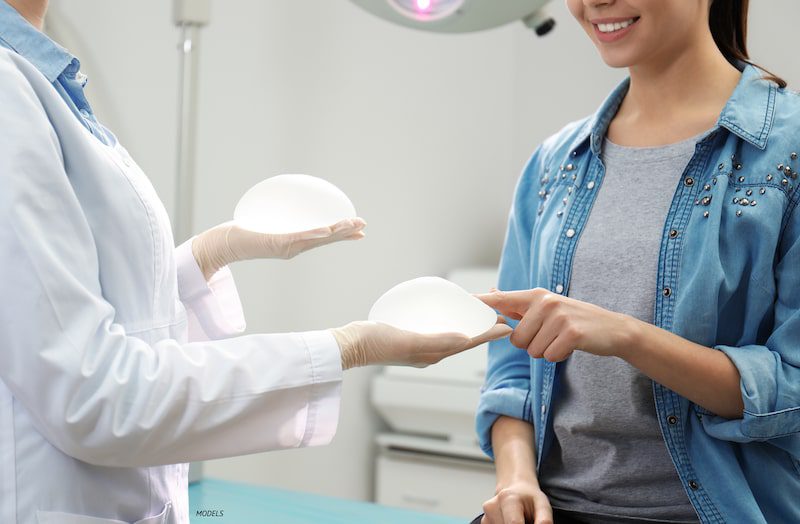What does the lifespan of a breast implant look like? If you go through the process of getting implants, how long can you expect them to last? Will you have to replace them after 10 years or do they last forever?
These are all questions for people with breast implants that can cause worry and uncertainty. Especially if money is an issue and you’re trying to invest in something that will actually benefit you in the long run.
But don’t worry! In this article, I’ll provide important information about how often breast implants should be replaced and what factors into deciding when it’s time.
What Is The Average Life Span Of Breast Implants?
When considering breast implant surgery, it’s important to understand the different implant types and how long they last.
The two main kinds of implants are silicone-gel and saline. Silicone breast implants are filled with a soft, pliable material and generally won’t need to be replaced over time. Saline breast implants, on the other hand, contain a saltwater solution that can wear out more quickly than silicone gel. They can also break down more easily, so replacement may be necessary sooner.
Most experts recommend that silicone implants last at least 10-15 years before needing replacement, while saline implants may need to be replaced as early as 8 years after initial implantation. However, this also depends on a variety of factors such as body weight and lifestyle habits (e.g., smoking).
Implant manufacturers usually recommend an annual medical check for women with their implants in order to detect any irregularities such as rupturing, leakage, or changes in breast shape or breast size. It is also recommended that patients replace their implants if they experience any discomfort or changes in the feel of the implant.
Patients should consult with their plastic surgeons ideally right after the initial surgery to determine the exact lifespan of their particular type of implant for an accurate estimate of when replacement will likely be necessary.
Signs It Is Time To Replace Your Breast Implants
When you get breast implants, you want them to look and feel their best for as long as possible. Unfortunately, just like any other piece of technology or equipment, breast implants will degrade over time. Here are five signs that it’s time to replace your implants:
- Changes in the shape of your breast – Sagging, rippling, or changes in the shape of your breasts can be a sign that your implants have outlived their usefulness and need to be replaced.
- Uneven breast appearance – If one implant is larger than the other, or if they don’t appear to be symmetrical anymore, this could mean that it’s time for a replacement.
- Hardening of the tissue around the implant – This can happen due to wear and tear on the implant over time or even a ruptured implant and should cause concern when noticed.
- Pain associated with touching the new pressure points – As an implant gets older it can start to create pressure points within surrounding tissues which cause pain when touched.
- Changes in sensation in the area – A sudden change in sensitivity or lack thereof and breast pain can indicate that something has gone wrong (e.g. silent ruptures) with your implant and needs attention as soon as possible!
If you believe any of these signs are present, especially if implant rupture is suspected, it’s best to consult a professional or qualified plastic surgeon about replacing your implants sooner rather than later for safety reasons!
What Is Breast Implant Replacement Surgery Like?
Breast implant replacement surgery is an outpatient procedure that typically takes between one to two hours to complete. The details and exact length of the operation will depend on the type and size of implant you get, as well as your unique body structure.
The procedure itself will involve making a small incision in breast tissue in order to perform the breast implant removal and then inserting new ones in their place. Anesthesia will keep you comfortable during the entire operation, allowing you to remain in a relaxed state while your surgeon makes sure everything goes according to plan.
After surgery, you may experience mild swelling or bruising, but most patients don’t have any major discomfort or pain. You’ll need to wear supportive garments for a few weeks post-op and wait around 6 weeks before resuming physical activities like jogging or weightlifting.
What is Recovery Like?
Recovery time may vary from person to person but usually lasts about 6-8 weeks depending on individual circumstances. During that period, you’ll need to limit any activities that are overly strenuous or could risk harming your implants. In the immediate postoperative period, you may experience discomfort and swelling, as well as have a limited range of movement in your arms and chest area due to the procedure itself.
During this time, it is important to wear a supportive bra or bandage consistently for at least two weeks. Additionally, you should avoid lifting anything heavy (more than 10 pounds) or other strenuous activity and take medications such as antibiotics and pain medications exactly as prescribed by your doctor to ensure a successful recovery.
Typically after recovery and resuming daily activities, follow-up visits with your surgeon will be scheduled in order to ensure that everything is healing correctly. Your doctor may also provide guidance on how often you should get evaluated or monitored for signs of complications such as leakage, development of scar tissues, or infection and when a replacement may be necessary.
In conclusion, it’s important to stay informed and make sure you remain up-to-date with your implant maintenance. One way to do this is to schedule regular consultations with your practitioner in order to monitor the condition of your implants. This will ensure that any changes can be quickly identified and corrected, helping protect your overall health and well-being.

